Forts & Palaces
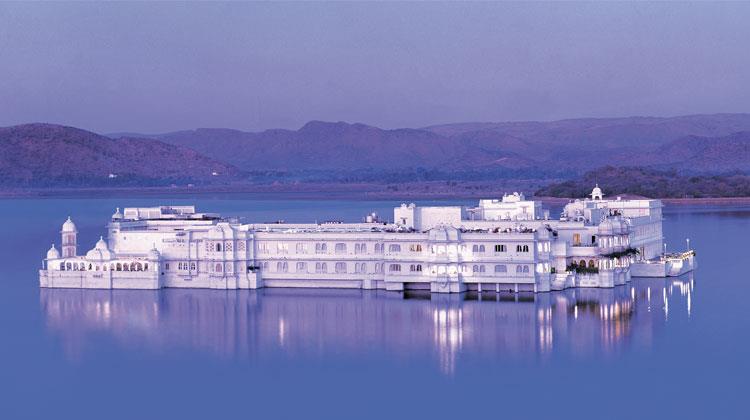

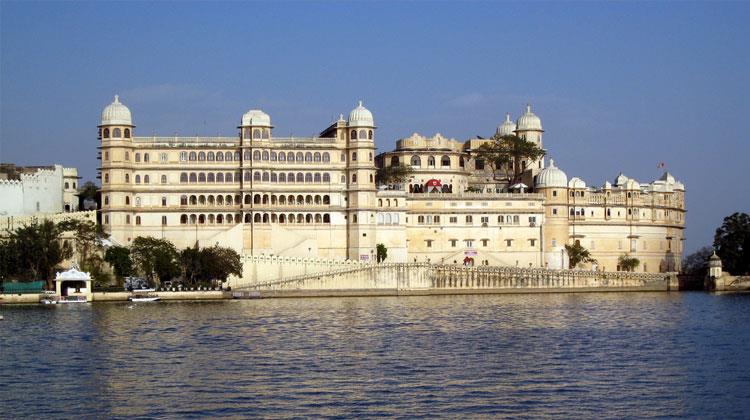
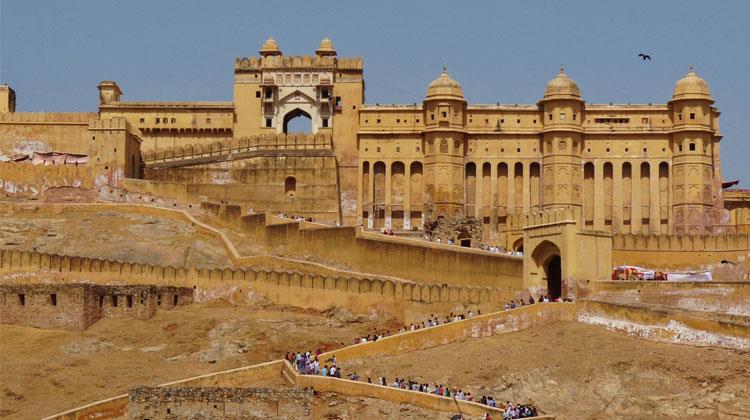

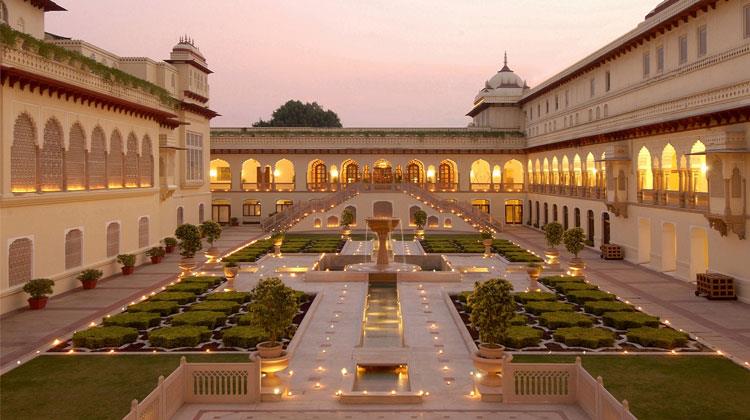
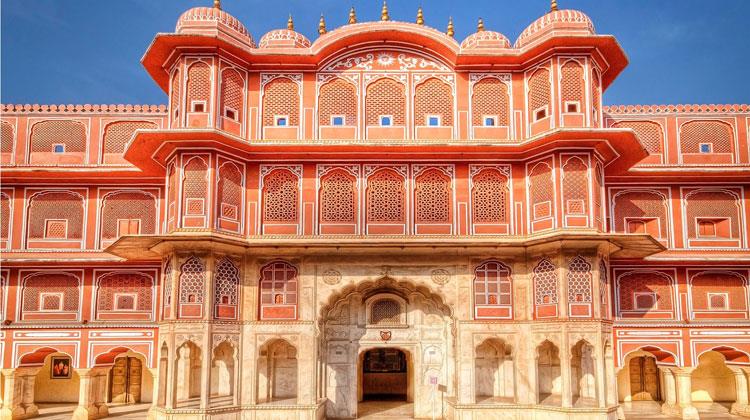
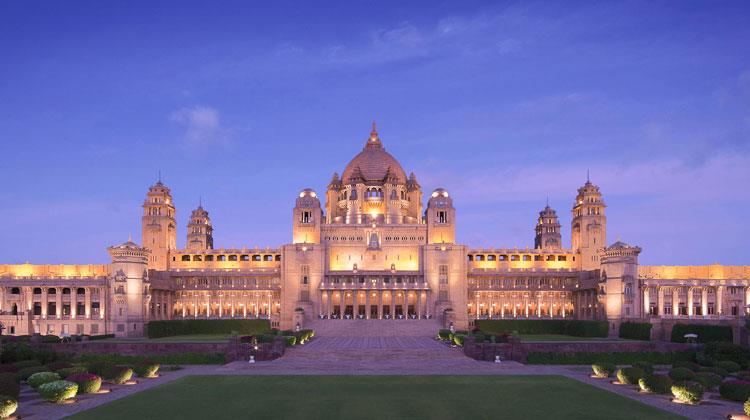
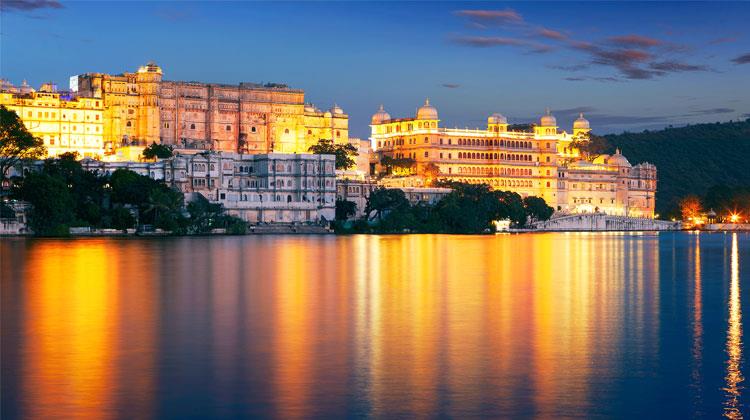
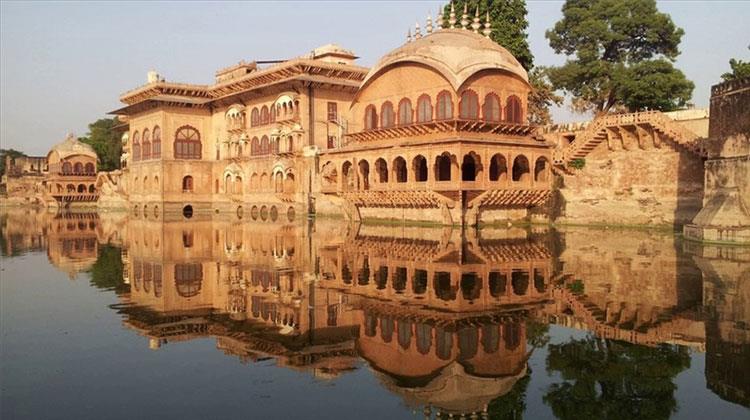
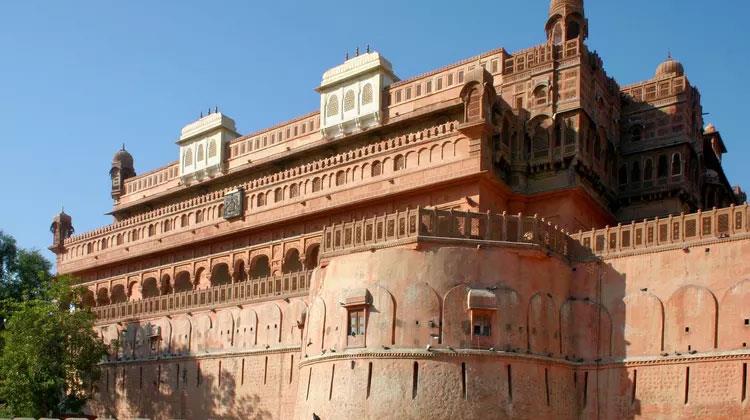
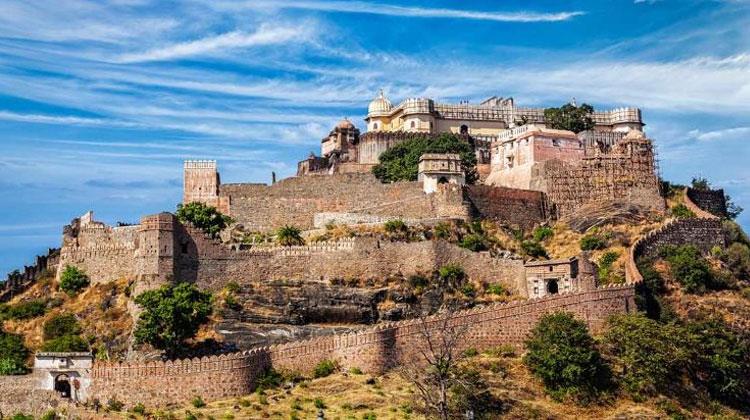
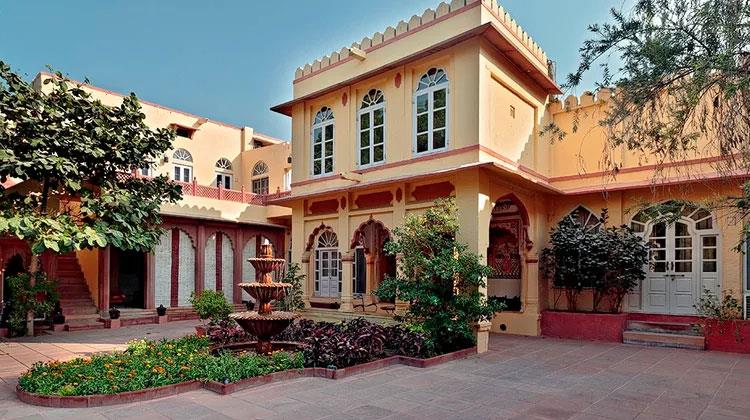

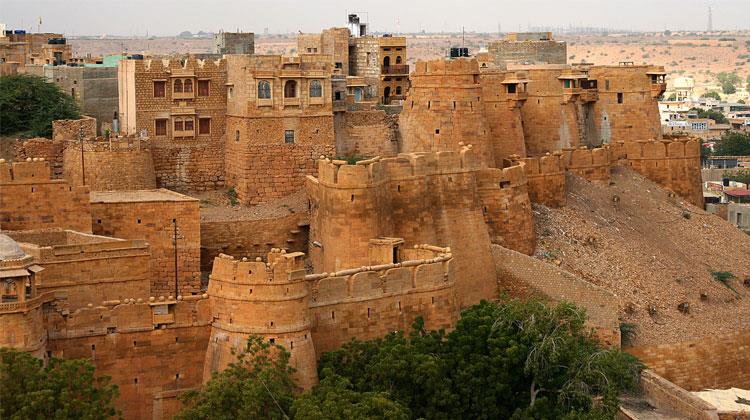
Lake Palace
The Lake Palace was built in 1743-1746 during the reign of Maharaja Jagat Singh II who was the 62nd successor of the royal family of Mewar. This palace was built to serve as the summer palace and was originally named after its founder as Jagniwas. The palace complex is spread across an area of four acres in the Jagniwas Island located in the Lake Pichola.The palace was constructed as east facing so that the members of the royal family could pray to the Sun God at the crack of the dawn. The flooring of the palace is done with black and white marbles with its walls being adorned by colorful arabesques in their best forms.
Deogarh Mahal
Situated eighty miles from the periphery of Udaipur, this 17th century palace is one of the best palaces in Rajasthan. Known for its glittering mirror and murals the Deogarh Mahal is a romantic palace encircled by a beautiful lake.This mahal is built on the top of the Arravalli Hills and has a marvellous courtyard along with an array of magnificent gateways, domes, jharokhas, turrets and battlements. This palace is owned by the royal Chundawat family, the members of which still reside here.
This Mahal is basically an exotic village situated 2100 feet above the sea level. This palace is converted into a modern day heritage hotel with fifty gorgeous suites and rooms equipped with all kinds of modern luxurious amenities like swimming pool, Jacuzzi, gym etc. The Deogarh Mahal is the perfect place to visit if you are traveling in between Jodhpur and Udaipur.
City Palace, Udaipur
Built in 1559 by Maharaja Udai Singh, this palace was setup as the capital of the Sisodia Rajpur clan. The City Palace is basically a palace complex that comprises of several other palaces within its periphery. This palace is built in a very flamboyant style and is located on the east banks of the Lake Pichola. The structure is considered to be one of the largest Palaces in Rajasthan, which is quite unique of its type.Similar to most of the Palaces in Rajasthan this palace too reflects an amalgamation of Rajput and Mughal Style of architecture. The City Palace is built on hilltop so as to provide a panoramic view of whole city along with its surroundings such as the Lake Palace, Jag Mandir, Monsoon Palace and the Neemach Mata Mandir.
Amber Palace
Amber Palace is one of the principal tourist destinations of the state of Rajasthan region especially for the people who are traveling to Jaipur. Situated on a high hill this beautiful palace is located in the Amer town which is approximately eleven kilometre from the city of Jaipur. This palace was built using red sandstone and marble during the reign of Raja Man Singh I who was the Kacchwaha King of Amber. The Amber fort overlooks the beautiful Maota Lake and has large gates along with cobbled paths.The architecture marvel of the palace can be observed by looking at its four level layout, Diwan-i-Khas, Diwan-i-Aam, Sheesh Mahal and Sukh Niwas, with each of them having a courtyard. Now Sukh Niwas has special attraction that the climate around it is created artificially with the help of water cascades built around the palace.
The palace complex also has a Sila Devi Temple, the idol of which was gifted to Raja Man Singh after he had defeated Raja of Jessore in 1604. Due to its strong cultural heritage and architectural beauty defining the artistic style of Hindu elements, this place witnesses an average footfall of five thousand visitors on daily basis (according to the reports from the Superintendent of Department of Archaeology and Museums).
Hawa Mahal
Designed in the form of the crown of Krishna, the striking Hawa Mahal was built by Maharaja Sawai Pratap Singh in 1798 and is one among the most famous palaces in Rajasthan. This palace is located in the heart of the city of Jaipur and is built of superior quality red bricks and sandstone. The exterior of the palace is basically a five storey building, which looks similar to the honeycomb of the beehives because of its nine hundred and fifty three small windows that are known as the Jharokhas.The name Hawa Mahal stands for the "Palace of Winds", which very much justifies it perfectly created airy structure. It has been designed in such a manner that creates an air conditioning effect inside the palace using the Venturi Effect. Apart from this, the intricate structure of the palace also served as a veil that allowed the female members of the royal family to observe the everyday ongoing of the streets below without being seen, as they had to follow the strict purdah or the face covering system.
The Hawa Mahal forms the part of the City Palace and extends up to Zenana, the harem chambers. The best time to view this palace is early in the morning since its red colour becomes extremely vivid in the soft glow of the morning sun.
Rambagh Palace
A very interesting history runs behind the building of this beautiful palace, which was once the home of the Maharaja of Jaipur. Initially, the first building of the palace was built as garden house in 1835, which was later converted into a hunting lodge by Maharaja Sawai Madho Singh since this palace was located in the midst of thick forest.It was later in the early 20th century that this hunting lodge was expanded into a palace. However after the independence of India, this palace was taken over by the Indian Government and by 1950s the royal family felt that the upkeep of the palace as well as its surrounding is becoming very costly.
This lead to their decision of turning it into a heritage hotel in 1957. This hotel is run by the Taj Group of Hotels and is considered to be one of the best and most luxurious hotels in the world. Due to its magnificent structure, amazing architecture and intricate designing this palace is very famous amongst tourist who visit this region, with most of them dreaming of staying in this hotel to experience its opulence and luxury.
Jaipur City Palace
Jaipur City Palace is one of the central attractions of the city due to its magnanimous complex and the fact that it is still a royal residence. Similar to the human heart this palace is located slightly south west of the centre of the city and hence it is considered to be the heart of Jaipur. The palace complex consists of several other building such as Mubrak Mahal, Chandra Mahal (though this part of the palace houses a museum, most of its part is still a royal residence), Maharani Palace, Mukut Mahal, Diwan-i-Khas, Diwan-i-Aam, Bhaggi Khana and Goving Dev Temple.The palace complex consists of a huge inner courtyard known by the name of Pritam Niwas Chowk. This courtyard has four gates, representing the four seasons and Hindu Gods. The palace was constructed in between 1729-1732 by Sawai Jai Singh II and was designed with an amalgamation of Rajput, Mughal and European style architecture. It is open for tourist visits all days of the week throughout the year except for some particular holidays such as Holi, Diwali and a few more.
Umaid Bhawan Palace
When it comes to Palaces and Forts in Rajasthan, the Umaid Bhawan Palace is one of the largest and the most visited one. Constructed in 1929 by the Maharaja Umaid Singh, this palace was originally built in order to provide employment to the thousands of people of this region suffering from famine. Since then, the palace has served as the home to the royal family.The palace was initially known as the "Chittar Palace" as it was located on the Chittar Hill, the highest point in Jodhpur. It is divided in to three parts of which one part is a luxury heritage Taj Palace Hotel that came into existence in 1972. Out of the other two parts, one serves as the residence to the current members of the royal family headed by Maharaja of Jodhpur Gaj Singh and the other part is a museum, which displays the belongings and the 20th century history of the Jodhpur Royal Family.
The palace is counted as one of the world’s largest private residences and has three hundred and twenty seven rooms. It also has a gallery that features the most exotic collection of automobiles owned by the royal family.
Jag Mandir Palace
Built in the 17th century, the Jagmandir Palace, today, is all set to serve the guests of 21st century. This vintage royal palace is now renovated with all day cafes, world class restaurants, bar, spas and cozy accommodations, giving its guests the royal experience in the modern surroundings.To reach the Jagmandir Island Paalce, the guests have to be ferried, as it is located at the center of the lake. The mesmerizing elegancy of Jagmandir Palace has given it a beautiful name, viz. "Swarg Ki Vatika", or "Garden of Heaven".
Deeg Palace
Once the capital of Jat Kings, the Deeg Palace is one of the major tourist destinations in Rajasthan. It is famously known as the site for a battle between the combined Mughal and Maratha Army and the Jats with the army of more than 80,000 men.The palaces of Delhi and Agra, depicting the magnificent Mughal architecture, inspired the design of Deeg Palace. Its gardens are the inspiration of Mughal Charbagh.
Monsoon Palace
Monsoon Palace was built by the MaharanaSajjan Singh, therefore the palace was also named after him as Sajjan Garh Palace. It is located on the top of the Aravalli Hill and oversees the Fateh Sagar Lake. The Sajjan Garh Palace popularly came to be known as the "Monsoon Palace" as the main motive of building it was watching the monsoon clouds.The place offers a panoramic view of the whole city of Udaipur and the scenic beauty of the surroundings of the city. The beauty of the Monsoon Palace is amplified when the sun sets and the lights are on. It has been a major tourist attraction of the city since it has been made open to the public.
Junagarh Palace
The Junagarh Palace was built in the 15th century. It was originally called the Chintamani Fort and was later renamed in the early 20th century to the Junagarh Palace. This palace is the pride of Bikaner and is the main tourist attraction of the city. The city Bikaner, has been built around this palace.The architecture of the Junagarh Palace is marvellous and is lauded all over the country. Once one enters the palace, they feel the aura of royalty resonated by the palace. The Junagarh Palace is amongst the Rajasthan forts and palaces. It is the perfect place to visit if one wants to experience the culture of Bikaner.
Kumbhalgarh Fort
he birthplace of Indian hero, Maharana Pratap, Kumbhalgarh is the Fort known for being one of the most important Rajasthan Palaces and Forts after the Fort of Chittorgarh. Open for public, the fort is known for its beautiful light show which is lit for a while every evening.Situated on a hilltop 1100 meters above the sea level, this fort has seven fortified gateways and over three hundred and sixty temples within. While three hundred of these temples are of Jain lineage, the other sixty are for Hindus.
This place appears stunningly attractive because of the sand dunes of the Thar Desert. Built by the Kumbha dynasty, the fort feature extensively beautiful gates, with one of them called Hanuman Pol, which enshrines the image of Lord Hanumana.
Rohet Fort
Situated on the Udaipur-Jodhpur highway, one among the famous palaces and forts in Rajasthan is the Rohetgarh Fort that has now been converted into a heritage hotel offering luxurious accommodation to its visitors to let them enjoy the opulence, vibrance and the vividness of the true Rajasthani culture and tradition.Before being converted into a hotel this palace served as the residence of the royal family of the 16th century Rathores’ of the Champawat clan. In current times the heritage hotels has twenty five air conditioned rooms out which two are super luxury suites.
Khimsar Fort
Located in Jodhpur, the Khimsar Fort is one of the grandest palaces present in Jodhpur and has embraced the Karamsi Rathore dynasty for decades now. Since this fort is a great tourist attraction and is beautiful beyond words, the Royal family converted half the palace into a hotel and lives in the other half.This fort is one of the most magnificent palaces present in Rajasthan. It covers over 11 acres of land and is marvelously designed to use the space in the best manner. One can easily visit this fort and get lost amidst its beauty and grandeur for days. There is so much present here that one can take up to four days to explore this palace entirely.
Bhangarh Fort
Located between Alwar and Jaipur, this beautiful fort is said to be the most haunted palace in India. It was built decades ago by a king named Madho Singh who named it after his grandfather Bhan Singh. This fort is one of the most majestic and interesting places to visit.The beautiful carvings on the wall and the architecture present here can leave you speechless. Although in ruins, this fort is still worth visiting as its beauty has not been destroyed completely. The paranormal activities that have been said to occur here happen at night and so tourists are not allowed to visit this place after the sunset.
Nahargarh Fort
Overlooking the pink city of Jaipur lays a fort so beautiful that it can take your breath away. Created in 1734 by the Maharaja of Jaipur, Sawai Jai Singh II, this beautiful fort once served as the retreat for the royal family.Known as one of the major Rajasthan Palaces and Forts, this is one of that Forts of Rajasthan that is endowed with architectural beauty and provides panoramic views of the city. The fort never came into attach during the course of history and saw several treaties, especially between the Maharaja of Jaipur and the Marathas.
This fort was also known for housing Sawai Ram Singh, the then king of Jaipur during the Indian uprising of 1857. The fort is also known for the filming of Rang De Basanti, a popular Indian movie. In Nahargarh Fort, several Bhawans, rooms and suites were built for the queens, each one of them linked through a way of corridors that still feature delicate frescos.
Chittor Fort
This is one of the major Forts of Rajasthan and is known to be one of the grandest in the country. The largest fort in India, Chittorgarh Fort is popular for its architecture, ramparts and ramifications that represent the quintessence of rulers and their patriotism, courage and chivalry. Built in the capital of Mewar, called Chittaur, this fort exemplifies the level of loyalty and valiance that rulers of Sisodia kingdom and their women and children had for Mewar.The fort is known for its history of bloodshed, especially when rulers, soldiers and their wife considered death as a more viable option than facing dishonour and surrendering themselves to the foreign rulers. Situated above the plains of valley drained by the river Berach, this fort is known for its historical palaces, stunning gates and major towers.
Jaisalmer Fort
Known as one of the largest forts in the world, Jaisalmer Fort is famous for its history that includes trades with countries like Egypt, Africa, Arabia and Persia. Situated in the Jaisalmer City of Rajasthan, the fort was built in 1156 AD by Rao Jaisal, who was a Bhati Rajput ruler.The fort was a scene of many battles in the great Thar desert and is perhaps most popular for its massive yellow sandstone walls that appear to be complimenting the golden stretches of sands in Thar Desert. It fades to honey gold and camouflages in the desert, which gave it an edge over the other forts when Jaisalmer went on war.
The fort, known as "Sonar Quila" or the fort of gold is certainly one of the most breath-taking monuments in the city. Major attractive here include popular Jain Temples, Laxminath temple, its four stunning gateways as well as the Raj Mahal or the Royal Palace. The fort also houses merchant havelis or the homes where merchants could stay. Here wealthy merchants, who came to the country for purposes of trade lived and built these houses for their convenience.
Taragarh Fort
The Star Fort of India is an impressive structure in the Indian State of Rajasthan, which is perhaps known for its stunning architecture. Although, the state of this fort is in ramshackle, it still manages to convey the glory for which it is was once known for.The impressive gateways of its fort were known for housing the crisscrossing tunnels on the hillside which are now an adventure area for history lovers and travellers. Currently, these tunnels are accessible through proper maps. The bastion for Chauhan dynasty was known for housing a large number of huge water reservoirs, which stored and supplied this vital product for residents and farmers during the times of crises.
Castle Bijapur
Located beside Chittorgarh, the castle of Bijapur had been converted into a hotel by the Royal family. They want to entertain the tourists like their own flesh and blood and want to keep the castle more like a place to stay than a place to visit. This beautiful castle is full of peace and tranquility.The architecture and the paintings found here are breathtakingly magnificent and can leave one speechless. It was originally built by a Rajput leader and hence reflects the true Rajput culture. The tourists staying here get a full-fledged experience of Rajput hospitality.
Furthermore being located beside a huge wildlife sanctuary, the castle of Bijapur is the perfect place to spend a weekend in. One can spot birds, leopards, tigers, cheetahs and so on from the terrace of the castle or can even explore the tiny yet marvelous village of Bijapur.
Great Trip with Great Company
